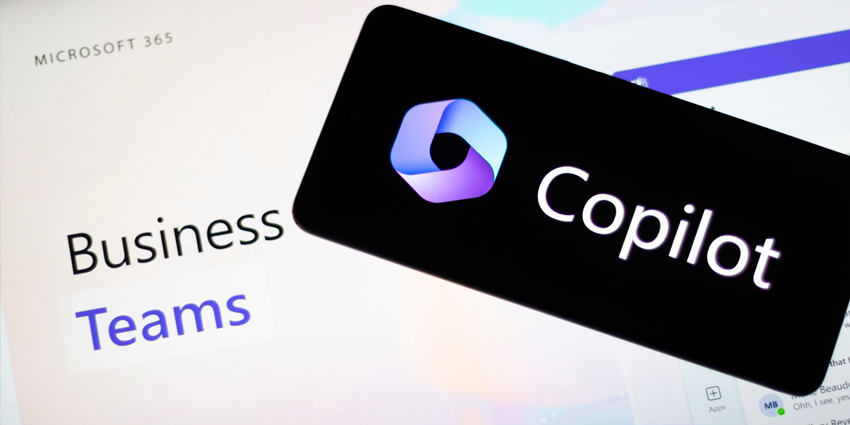Microsoft is quietly pushing forward with an industrial Metaverse roadmap. Most recently, Lili Cheng, Corporate Vice President, Business Applications and Platforms at Microsoft, wrote on the keys to Mixed Reality (MR) success for frontline workers.
Cheng noted how MR solutions can assist frontline workers in keeping up with modern workplace challenges such as training, upskilling, downtime, and productivity.
Microsoft explains how its investments in the emerging generative AI-powered service CoPilot will also improve MR dynamics guide service for XR headsets – lending a hand in optimizing frontline operations.
Microsoft is still enhancing its MR and generative AI services, with only sparse immersive tech announcements. However, the firm predicts its industrial Metaverse roadmap will see significant updates in 2024 – as generative AI takes centre stage.
Microsoft seems keen on creating an ecosystem that allows clients to leverage AI and MR to optimize workflows – but what can MR and AI offer frontline end-users today?
3 Keys to MR Success on the Frontline
Improve Productivity with Remote Collaboration
According to Microsoft, the “average manufacturer” will confront more than “800 hours of equipment downtime a year, or 15 hours per week,” meaning that industrial manufacturers spend roughly $50 billion on device downtime yearly.
Cheng explained that in industrial frontline environments, valuable insights are “confined to individuals, groups, or departments,” an element that has to change.
Cheng also added:
Mixed reality shifts this dynamic. Workers can share real-time, situational video of their environment, allowing others to experience it firsthand—regardless of location. Expert guidance, troubleshooting, or step-by-step instructions are immediate. This eliminates the need to travel, while minimizing downtime and production disruptions.
Dynamics 365 Guides provides a spatial environment that allows frontline workers to access Microsoft brand collaboration tools, such as Teams. Allowing frontline workers to complete repair procedures – which can become a significant blocker – with increased efficiency, connecting workers “beyond their physical limits,” remarked Cheng.
Optimising Training
Cheng calls “traditional” in-place training and onboarding processes “ineffective”, as well as noting how it adds to the cognitive burden of “overwhelmed frontline workers.”
The Corporate Vice President also notes that in-person training considerations include various setup elements, which costs time and money.
Cheng notes that hands-on training with “physical assets is expensive, time-consuming, and at times dangerous,” resulting in inconsistent quality or impersonal training.
Although Cheng believes MR/holographic environments can reduce the in-person training risks -also noting:
Embracing mixed reality accelerates learning by introducing relevant, task-specific knowledge in new immersive and data-rich environments.
Moreover, the Microsoft exec mentioned the importance and roles of integrated technologies such as digital twins, explaining RT3D visualization and data allow frontline workers to “receive a better understanding of the machines and processes at hand.”
Cheng also added that access to related materials, such as digital twins, can be “further enhanced by AI,” saying:
Mixed reality is the eyes and ears of AI. Delving into operation nuances for personalized, in-depth learning becomes easier. When integrated, mixed reality and AI accelerate worker training, shortening steps and supplying users with the working knowledge they need for the task at hand.
Leveraging XR to Secure Generational Skill Transfer
In their final key to frontline XR success, Cheng adds that the manufacturing vertical is £experiencing a talent exodus” due to various factors, including globalization, unemployment, and a “rapidly” ageing workforce.
However, MR can combat emerging talent acquisition hurdles. Cheng added:
Mixed reality facilitates knowledge retention and transfer across an organization through the creation of immersive experiences and simulations, regardless of location or device.
Microsoft’s MR service claims to improve worker accuracy, productivity, and efficiency by democratizing immersive services across the workforce through worker access to its Microsoft Dynamics 365 Field Service immersive mobile application.
Additionally, Cheng noted the “versatility” of frontline MR applications simply makes “up-skilling faster and more accessible,” going on to say how Microsoft’s Dynamics 365 Guides gives industrial workers the tools to document “unique situational processes and procedures not included in asset operating manuals.”
Not Just GenAI!
However, GenAI is not the only consideration Microsoft has for its industrial Metaverse roadmap.
Cheng also noted how the firm includes other emerging “cross-platform” technologies to fuel its frontline MR services, such as cloud to the edge, digital twins, and machine learning.
As noted, Microsoft is planning something big with its industrial Metaverse roadmap. The firm first teased its Metaverse plans at its Inspire 2023 showcase event covering its latest innovations.
At the event, Microsoft quietly teased information regarding an industrial metaverse initiative. The firm will kick the plan off in 2024 as part of its AI Cloud Partner Program, again deeply cementing its co-pollination of AI and XR for producing innovative workplace digital solutions.
Microsoft is partnering with leading technology companies to fuel growth and innovation towards enterprise-grade AI. Within its AI goals, Microsoft is also supporting efforts to grow industrial metaverse solutions and related technologies.
The partnership will innovate AI, Cloud, and Metaverse solutions to increase enterprise end-user productivity, resiliency, and sustainability.
The firm also offers a “curated learning path” to provide end-users with resources to introduce workplace XR technology – which includes considerations for a range of integrated technologies, such as Microsoft Co-Pilot, Azure OpenAI, AI, ML, Azure Databricks, Synapse Analytics (2024), Microsoft Fabric (2024), Microsoft Purview, Power Platform, D365 Field Service, D365 Guides, D365 Remote Assist, HoloLens 2, Azure Maps, Azure HPC product, and Azure Digital Twins.







